You are here
Ostia Antica - Lido di Ostia
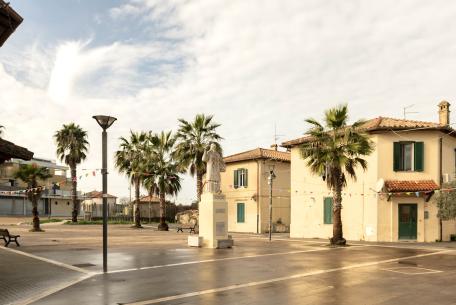
Flavours and ancient traditions in a place where time seems to have stopped
The area where the Village of Ostia Antica stands was occupied by necropolis in the imperial age. In the 5th century, a basilica was built on Saint Aurea martyr's tomb site.
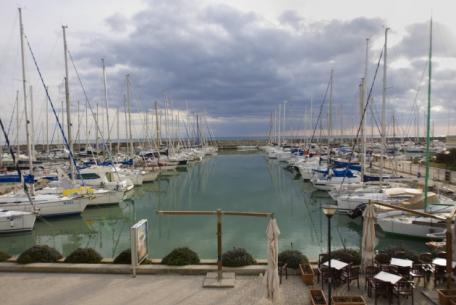
The history of the area as a port city has ancient origins; its sense and significance can be found in relation to the nearby city of Rome.
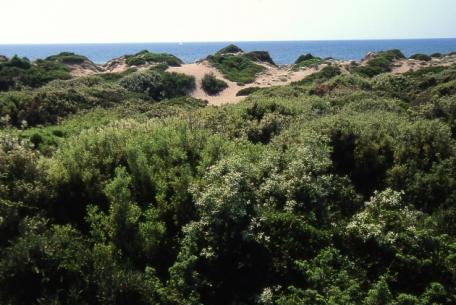
Along the Roman coast we can see the dune ecosystem, rarer and rarer along the coasts of the Italian peninsula.
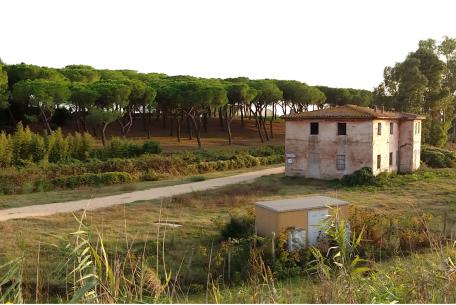
We are in the Natural Reserve of the Roman Coast. The drainage, carried out about a century ago, gave back fertility to these fields, thus restoring their agricultural and pastoral use.
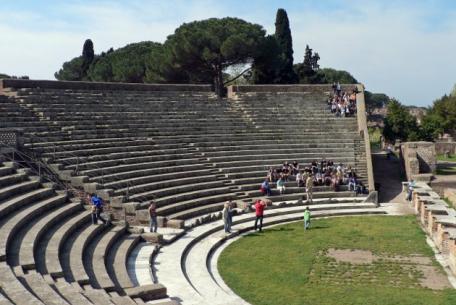
In your experience in the territory of Ostia you cannot miss to visit the Parco Archeologico di Ostia Antica, one of the largest archeological sites of ancient Rome.
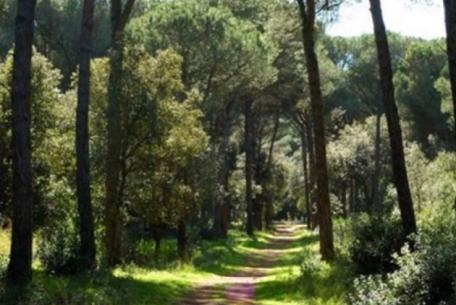
Established in 1996, the Riserva Naturale Statale del Litorale Romano (State Nature Reserve of the Roman Littoral), which covers about 15,900 hectares, 8,000 of wh
[...]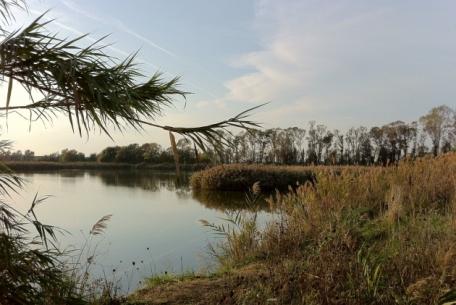
At the end of the ‘70s some national and local associations decided to found the Park of the Roman Coast in order to safeguard and enhance biodiversity in this area, with the moral purpose of oppos
[...]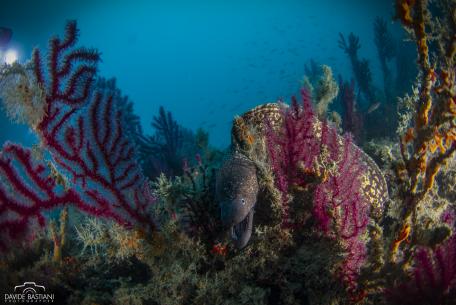
The Shoals of Tor Paterno, located off the Roman coast between Ostia and Torvajanica, consist of a rock formation covered with animal and vegetable organisms that,
[...]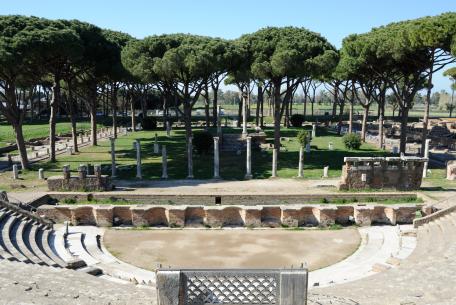
Located within the archaeological area of the excavations, the Roman theatre of Ancient Ostia was built under the reign of Augustus at the end of the 1st century BC.
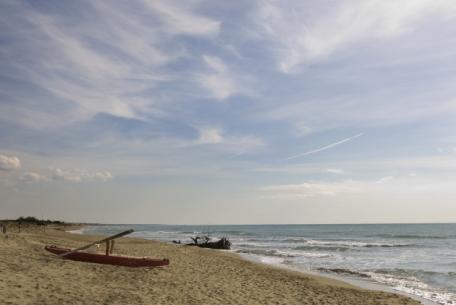
The Presidential Estate of Castelporziano covers an area of about 59 square kilometers (5,892 hectares) and is 24 kilometers from the center of Rome.
Along Via dei Romagnoli, towards the coast, is the enchanting Borgo di Ostia Antica, a charming place characterized by alleys and small houses with relaxing colours. It is a loved destination by the Romans and tourists for having pleasant day trips and experience the fascinating medieval atmosphere a short distance from the Capital.
Occupied by a Christian necropolis in imperial times, the area became a fortified citadel in the 9th century, thanks to Pope Gregory IV, from whom it took the name Gregoriopolis. In the 15th century, given the strategic importance of the area for river traffic and the presence of salterns, Pope Martin V built a defensive tower surrounded by a moat. Later, the then bishop of Ostia, Cardinal Guglielmo d’Estouteville, ordered the restoration of the walls and the building of three rows of terraced houses still inhabited. The imposing Castle is a magnificent example of Renaissance military architecture, due to Cardinal Giuliano della Rovere, future Pope Julius II, realised by the architect Baccio Pontelli between 1483 and 1487. The fortress has three towers connected from a series of casemates (gun chambers). A large moat surrounds the whole.
In front of the Borgo is the beautiful Parco Archeologico di Ostia Antica, one of the largest and most important archaeological areas in Italy. It is the second by extension after Pompeii and let you experience an authentic immersion in an ancient Roman city, surrounded by lush Mediterranean nature. The first remains of the ancient city of Ostia - the ruins of a fortress (castrum) made of tuff blocks - date back to the second half of the 4th century BC. According to tradition, the settlement was founded by King Anco Marzio around 620 BC. Over time, having lost its military function, it became the main merchant emporium of the capital and a prosperous commercial centre. The arrangement of the Forum and the building of thermal baths, horrea (grain deposits), scholae (seats for professional associations), insulae (large rental blocks), and the Capitolium (main temple of the city) date back to the 2nd century AD. Inside is the suggestive Roman theatre, built at the end of the 1st century under the emperor Augustus and enlarged in the following century to accommodate up to 4,000 people. Today, it hosts numerous cultural events, such as theatrical performances, concerts and ballets.
Continuing towards the sea, you reach Lido di Ostia. It is a neighbourhood looking like a small city made up of long stretches of sand and rationalist and Art Noveau architecture. In the early 1900s, a new idea of experiencing the sea led to the birth of buildings, squares, bathing establishments and road networks connecting with the city. Thanks to its lively atmosphere, the area is one of the favourite destinations for Romans and tourists to enjoy the sea at 360 degrees in all seasons. Its waterfront is a suggestive promenade with many historical bathing establishments, colourful beach umbrellas, elegant huts, excellent restaurants and trendy cocktail bars. Not to be missed a cocktail on the beach, admiring the incomparable colours of the sunset, or a taste of the famous and refined flavours of the cuisine based on fresh fish and shellfish. Lido di Ostia is also a must for outdoor sports enthusiasts: the beach of Rome awaits you for a jogging session by the sea, an exciting game of beach volleyball, beach soccer or frisbee, or to face the waters rippled by the wind aboard a surfboard, a windsurf or on top of a kitesurf. If you love skateboarding and urban art, try the 1600 square meters of the Concrete Skate Park.
Going ashore in Rome and enjoying its beauties, without having to leave the charm of the sea, is possible in the modern Porto Turistico (Tourist Port), which welcomes boats of all sizes. Here, you can go shopping in one of its many shops or attend major cultural and sporting events. The Port also invites you to pleasant walks, on foot or by bicycle, or to relax, enjoying an ice cream, a cocktail, or a gastronomic speciality of its restaurants.
In the neighbourhood is a place where time seems to stand still: the delightful Borghetto dei Pescatori, located between the coast and the Pineta di Castelfusano. Here, the cult of traditions has remained unchanged. Still today, the fishermen give life to the evocative procession of boats with the Madonna Stella Maris, which culminates in the "Marriage with the Sea", a symbolic union with their protectress Virgin Mary. The usual Sagra della tellina is an explosion of taste. Since 1963, it has attracted Romans and tourists lovers of this delicious seafood.
Lido di Ostia also has a wild side: the coastal strip of the “Cancelli”, 5 km of natural oases characterized by sand dunes. Surrounded by the Mediterranean scrub, you can enjoy unforgettable and joyful moments in this suggestive stretch of sea surrounded by nature.











































